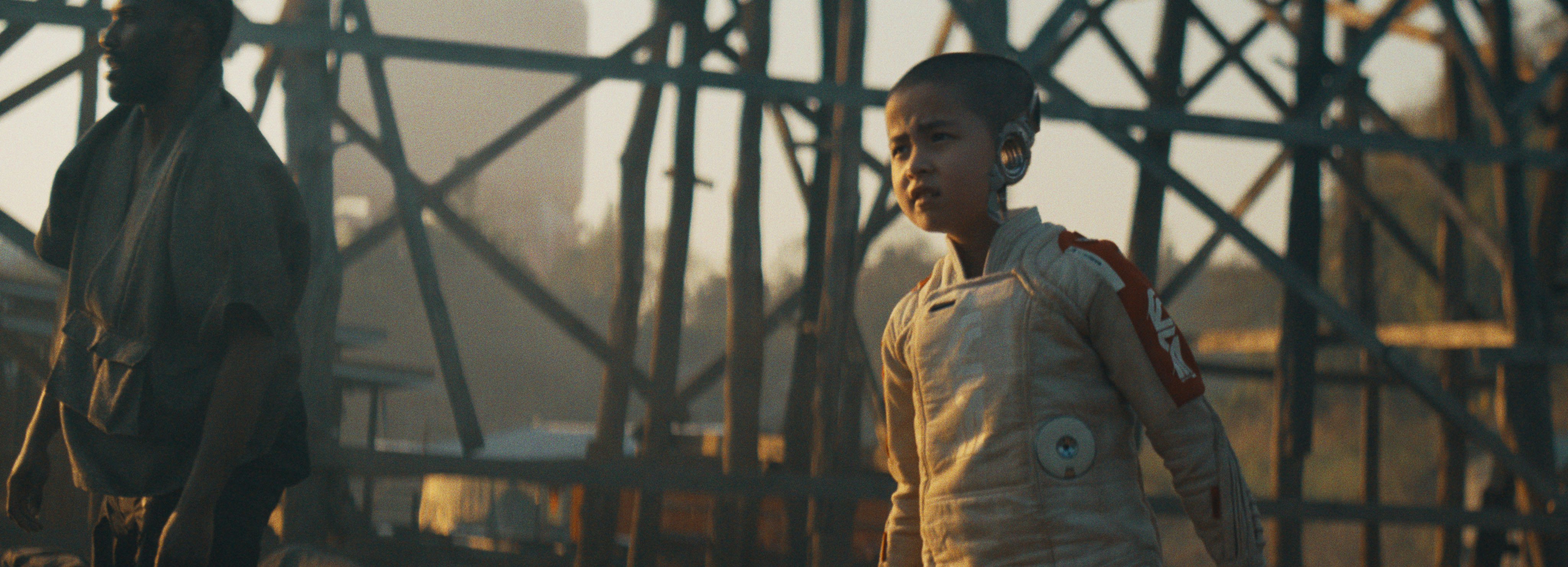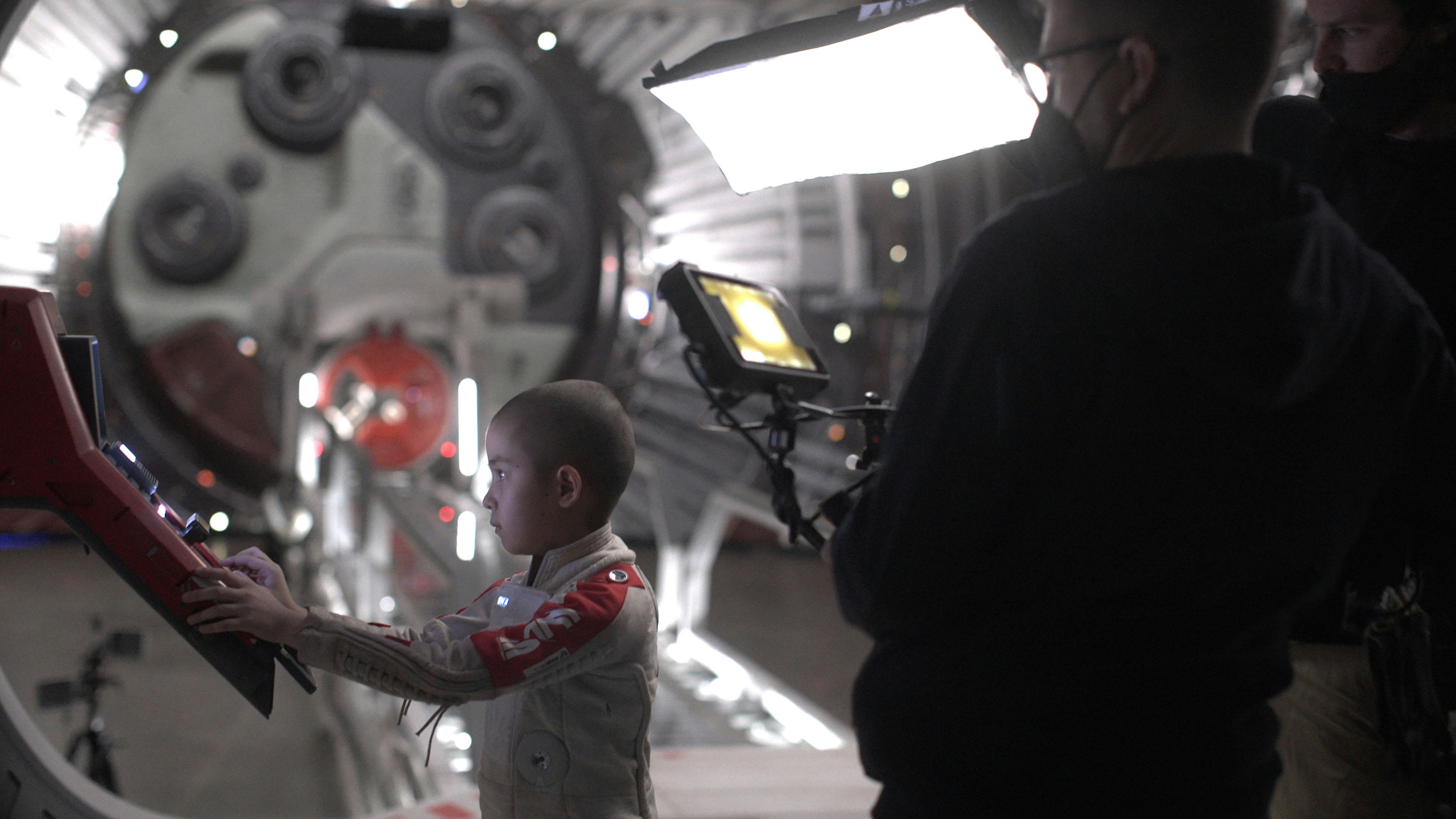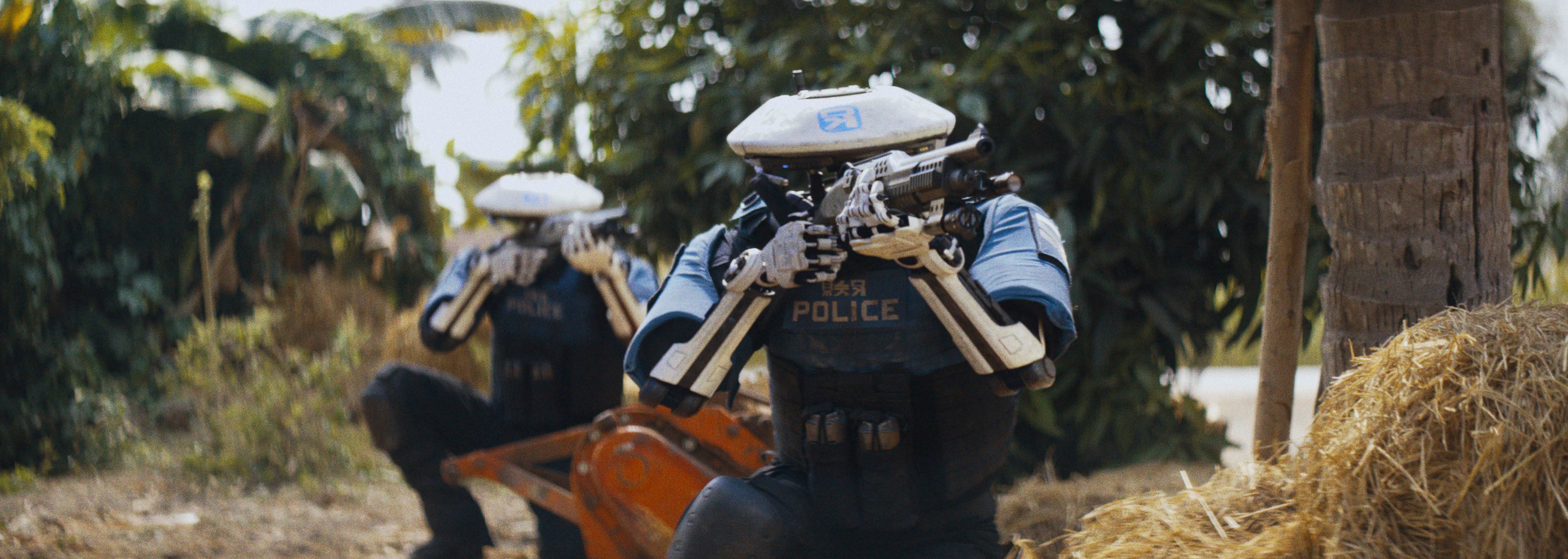
Partially inspired by Vietnam War movies like Apocalypse Now, The Creator riffs on a classic sci-fi concept: What if robots were an oppressed underclass? Comparisons to Star Wars are unavoidable. In addition to being a sci-fi tale about a ragtag rebel group battling imperial forces (in this case the US military), The Creator counts several Star Wars alumni among its creative team. Director Gareth Edwards helmed Rogue One, reuniting with screenwriter Chris Weitz and cinematographer Greig Fraser. Meanwhile production designer James Clyne held senior VFX and design roles on the Star Wars sequel trilogy and Solo: A Star Wars Story, following numerous concept art credits on films like Avatar and Alita: Battle Angel.
But with its striking visual worldbuilding, gorgeous landscapes, and original near-future technology, The Creator is a welcome antidote to blockbuster CGI bloat that contemporary franchises are starting to buckle underneath.
Clyne shaped The Creator’s aesthetic, adopting an unusual process for blockbuster VFX. "We made this movie a little bit backwards. Gareth wanted to make a movie in a very unconventional way," he tells Inverse. "We used the environment as our foundations for the design."
“We wanted to create our own future.”
Armed with techniques he learned from Star Wars movies, and an $80 million budget — less than half the price of a typical Marvel movie — Edwards rejected greenscreen-centric filmmaking. Instead he prioritized location shoots in Thailand, adding futuristic architecture to the landscape during post-production. The end result is a grounded Southeast Asian setting where humans, robots, and humanoid “simulants” live side-by-side. This provides the backdrop for a thriller about an American soldier (John David Washington) and a simulant child named Alphie (Madeleine Yuna Voyles).
Speaking to Inverse, Clyne discussed The Creator’s inspirations, revealed the common elements shared between the film and Star Wars, and explained how Gareth Edwards’ so-called guerilla filming techniques could change the way blockbusters are made.
This interview has been edited for length and clarity.

What were the initial conversations like, regarding visual worldbuilding? You and Gareth Edwards worked on Star Wars, but The Creator has a very distinctive aesthetic of its own.
Gareth and I, we’re huge Star Wars fans first and foremost. We consider Star Wars more fantasy than sci-fi in that it’s not trying to be a predictor of the future. In a way it’s more emotional than it is technical. If something is threatening, we want it to look aggressive. So a lot of our conversations were like, “Emotionally, how do we feel about the look of this movie?”
For example the NOMAD, that big flying space station… ultimately we came upon this idea of a bird of prey. Like a falcon or an eagle flying over the landscape looking for its prey. You’ll notice that it has this very aggressive, hard-edged wing formation. Subconsciously, you get this idea that it looks dangerous.
But on the flip side of that, mentally we were in the zone of a Blade Runner/Akira feel. Because the movie takes place mostly in Southeast Asia, we wanted kind of a Southeast Asian flair to it. Japanese influences of early anime from the ‘80s and ‘90s. Even some of the technology from the ‘90s. We looked at Walkmans, we looked at Sony products. This all plays into us not wanting to be a predictor of the future. We wanted to create our own future.
“We consider Star Wars more fantasy than sci-fi in that it’s not trying to be a predictor of the future. In a way it’s more emotional than it is technical. If something is threatening, we want it to look aggressive.”
The existing landscape plays a big role in The Creator’s world. There’s this combination of epic futuristic architecture and then everyday farms and towns in New Asia. I was wondering how those environments played into your process.
We made this movie a little bit backwards. Gareth wanted to make a movie in a very unconventional way, in that we used the environment as our foundations for the design. So if we were to build a house on a hillside, we wouldn't design the house first. We’d design the house into the hillside and try to integrate it into its environment.
We shot a lot of the film on location with smaller crews, smaller set builds, and prop design, knowing that we’d go in later and design those buildings, those vehicles, all that kind of future tech after the fact.

So were you on set more than on a typical job?
Our film was broken into two entities. There was the Thailand shoot and then there was a smaller London shoot in Pinewood. So I would prep in Thailand, looking at all the props that we had to design, the set-dressing, some of the smaller sets that we would build. And then I went to London to prep the London shoot as well.
The Creator’s signature designs are probably the humanoid robots, the simulants with a kind of hole through their head. Could you tell me your thoughts behind the different character designs?
The most obvious one would be Alphie. Again, this goes to more of an emotional perspective than a technical one. When you saw her facing the camera she kind of looked humanoid, but then she’d turn and you’d see her profile and there was a big hole in her head. It was an obvious statement that she was not human.
One of the things we talked about was negative space. How do we remove the back of the head in such a way, how do we create that hole that looks integrated to the head? It has to feel like it all works together. Gareth from the get-go wanted the hole in the head idea - almost like you can see into their thoughts, in that there’s these little rings.

As Alphie thinks, or as she gets emotional, those rings actually spin at different speeds. So you're almost seeing into her brain and how it’s functioning. That was a fun little cinematic cue, knowing that she’s thinking or that she’s having to use some of her powers.
We wanted to almost feel like a Japanese manufacturer came in and designed her head back in the ‘90s. I think the strength of the first Blade Runner movie is, you can watch that movie and still feel like it’s some alternate future. I think it took place in like 2019? So the robots, we didn’t want them to look like “What if Apple designed a robot in 2070.” Rather, “What if Sony designed this robot but in the ‘90s.”
“It’s gonna change things.”
Do you have any personal favorite details that you’d like to highlight for viewers?
I love the police robots. Glyn Dillon, one of our artists, was a big part of designing those robots. Glyn is awesome. He designed Kylo Ren and the next generation of stormtroopers.
What I love about those robots is they do look very strange and new and robotic, but because we shot real actors on the day, they feel real. You don’t question them even though your brain is saying “that can’t be real.” The way they move is very natural and very human. But your brain is being confused by what you’re looking at.

I was wondering if those robots were motion capture.
Because we just didn't have the system in place, we had very little tracking markers on actors. We just relied on the performance and then in post we figured out how to do it.
I think Gareth wanted to move fast. He has this guerilla style of filmmaking where he doesn’t want to spend a lot of time with the setup. He just wants to find the shot and move on. That just didn't allow the effects to slow down the process. And we were able to figure a lot of it out quickly in post. I think there’s gonna be a lot of changes made to this type of movie going forward, when people understand how we’ve made this movie.
There’s already a lot of interest in the mix of different techniques and the fact that it didn't cost $300 million.
It’s gonna change things. There’s going to be some discussions of, why are we making $300 million movies when The Creator was $80-90 million? Obviously this process isn't going to work for everybody, but I think there are techniques of doing things quicker, faster.







